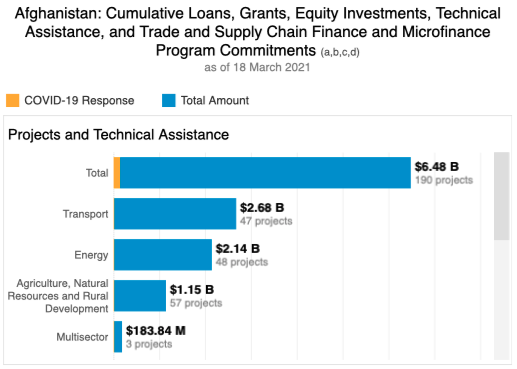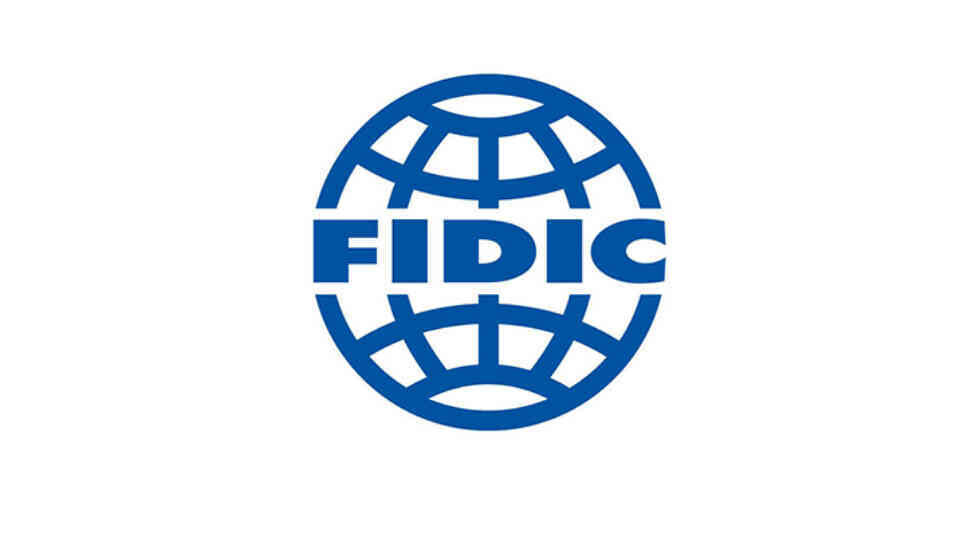The role of Asian Development Bank in Afghanistan
Over the last half-century, Afghanistan had plentiful challenging periods. Torn with numerous conflicts, Afghanistan had an urge to get support from the international community. Hence, several International Financial Institutions (IFIs) rolled up their sleeves to assist the Afghan society via Multilateral Development Banks (MDBs). This short paper will go through several of such efforts by the Asian Development Bank (ADB). Established in 1966, ADB is committed to promoting socio-economic development in the Asia-Pacific region. In line with its mandate, assistance to Afghanistan constitutes a significant part of ADB activities (despite the hiatus in partnership between 1980-2001).
Since 1966, ADB's total amount of grants and lending committed to Afghanistan amounted to almost $6.5 billion. ADB's primary goal is to prevent poverty from worsening. Transport, energy, agriculture, rural development, and local capacity building are the main directions of resource allocation. The fragile security situation and political uncertainty have always been major issues in implementing commitments towards Afghanistan. Nevertheless, ADB approved the country operations business plan for 2021-2023 and currently develops a country partnership strategy for 2021-2025. In addition, ADB assisted the government in the transport and infrastructure development plan until 2036.
 Figure 1: Cumulative loans and grants to Afghanistan
Figure 1: Cumulative loans and grants to Afghanistan
Source: Asian Development Bank, 2021
A closer examination of the details reveals that contributions from one entity are not enough to encompass the complexity of issues that needs to be covered. For instance, Afghani infrastructure requires $4 billion over the upcoming years. There is no single party that could afford such a sum. With this consideration in mind, ADB established Afghanistan Infrastructure Trust Fund (AITF) in 2010. AITF enables other actors to issue funds to increase local infrastructural capacity and boost economic activity. Additionally, ADB grants postgraduate scholarships to students who want to acquire expertise in development studies.
As mentioned, energy and transport play a crucial role in ADB's activities in Afghanistan. ADB is on the brink of achieving some landmark milestones in creating a more resilient infrastructure. The Afghanistan-Uzbekistan Transmission Line Project, The Border Electrification Project, Renewable Energy Generation Project, Turkmenistan-Afghanistan-Pakistan-India Gas Pipeline Project, the Railway Regional Connectivity Project, the North-South, and the East-West Road Rehabilitation Project are just a few examples.
Apart from the long-term projects and programs, ADB also supports Afghanistan in its fight against the ongoing pandemic. COVID-19 Active Response and Expenditure Support Program distributed $40 million to construct medical facilities, procure medical supplies, and train essential health workers. Throughout its existence, ADB was able to gain broad experience in assisting countries in fragile and conflict situations. This expertise is of great merit for Afghanistan. Hopefully, ADB will continue its activities within the region to bring broader prosperity to Afghan society.
Javid Ibad
Further Reading
Afghanistan Infrastructure Trust Fund.
Afghanistan 2021-2023: Country Operations Business Plan.
Afghanistan 2017-2021: Country Partnership Strategy.




